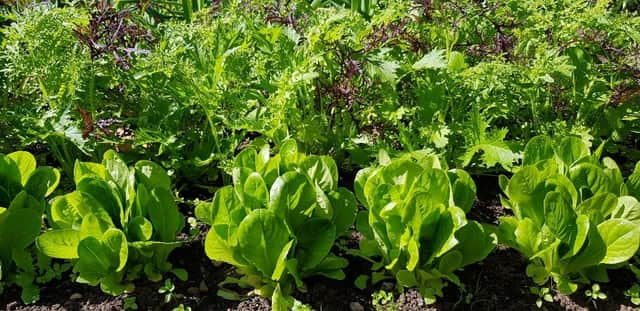GARDENING: heady heady heay d


The knowledge that they`ve been raised organically and are not
too difficult to grow is so reassuring. Okay, so the potatoes might be smaller than you anticipated and there may be a wonky carrot or two, but just close your eyes and taste them. Good eh!
Advertisement
Hide AdAdvertisement
Hide AdFeatured in recent media items and the substance of homely television programmes, this pleasurable pursuit will have brought even more would-be gardeners onside. A lifetime interest can begin with the thrill that accompanies tasting the first successful salad crops, radish, and lettuce perhaps, and grows as more ambitious targets drive us forward.
Taking on an overgrown allotment infested with perennial weeds is not
for the faint-hearted, but can be done if you`re keen. Best option for beginners is probably to ease into the pursuit gently through container gardening. This can embrace large pots, tubs, or raised beds, either bought or constructed. Each is capable of hosting edible or ornamental plants. However, remember that the roots of any container-grown plant will remain confined and cannot go foraging deep into the soil for food or moisture as do those in open land. So, you must compensate with regular watering and feeding during the growing season. Also note when filling any container, that the bulky nature of organic matter and a soil-based compost are most effective
for moisture retention.
Dwarf fruit trees and bushes were created for such situations and can deliver a substantial patio crop. When growing these or ornamental shrubs in a large container, I first ensure there`s adequate drainage from a layer of crocks or pebbles at the base, then, in the absence of weathered manure or compost, add a thick piece of turf, grass facing down, before compost and planting. Thankfully, the gardening trade caters for all. If you wish to raise certain vegetables or ornamental plants from seed to maturity that`s fine. Follow the instructions on the packet or glean further information from the firm`s catalogue. But it`s much easier to buy young plug-plants and give yourself a head start. These come in various sizes from mini to jumbo, increasing in size and price as the season progresses.
Advertisement
Hide AdAdvertisement
Hide AdVegetable growing has become much easier as the range of plug plants available has increased. Gardening outlets sell these in handy-sized packs so, rather than wait patiently in hope that all the seeds sown in an outdoor drill will germinate, you can plant a row instantly. However, timing is all important.
For example, given our relatively short growing season, sweet corn
plants need to be in my garden by the beginning of June to stand a chance of developing mature cobs for September harvesting. They were raised in the greenhouse from pot-sown seed in mid-March and subsequently planted-out. They`re currently on course, standing almost one metre tall with thick stems topped by tassels of flower and lower cobs fattening. This said, the pencil-thin plants I saw on sale in small trays last week, have little chance of reaching maturity unless we experience an Indian summer.
Similarly, most winter vegetables should be out in the garden by this
Advertisement
Hide AdAdvertisement
Hide Adtime. If they`re at the seedling stage they need to catch-up. Leeks appreciate an early start, say late May to June. June is best for Brussels sprouts, but all our veggie beds were full at that time, so we have grown them on in pots for mid- July planting. The same applies to purple sprouting broccoli and the winter cabbages. In each of these cases the earlier sowing time was critical in having the plants ready for outdoor action now.
Generous advice abounds, and it`s worth listening to others who`ve
excelled with a crop but do remember that in gardening there are often several routes to success with the same plant. If a certain method of cultivation works for you then stick with it. And don`t give up because of a perceived failure, we all have them.
I`ve recently dug out a blight-infected potato, consumed the produce
Advertisement
Hide AdAdvertisement
Hide Adand disposed of the offending plant material. It was caught early, and the remainder of the crop is fine but constantly monitored.
For every little setback something positive turns up and it`s arrived this time in the performance of the `Little Gem` lettuce, which, given space, is a heart-forming type. In mid-June I sowed it in a module tray, a pinch of seed to each cell, and planted the resultant plugs in two rows outdoors. My how they`ve advanced! We`re picking them as a leaf lettuce which is deliciously sweet and will eventually have the bonus of hearts to harvest. This is one plant that is living up to its name!